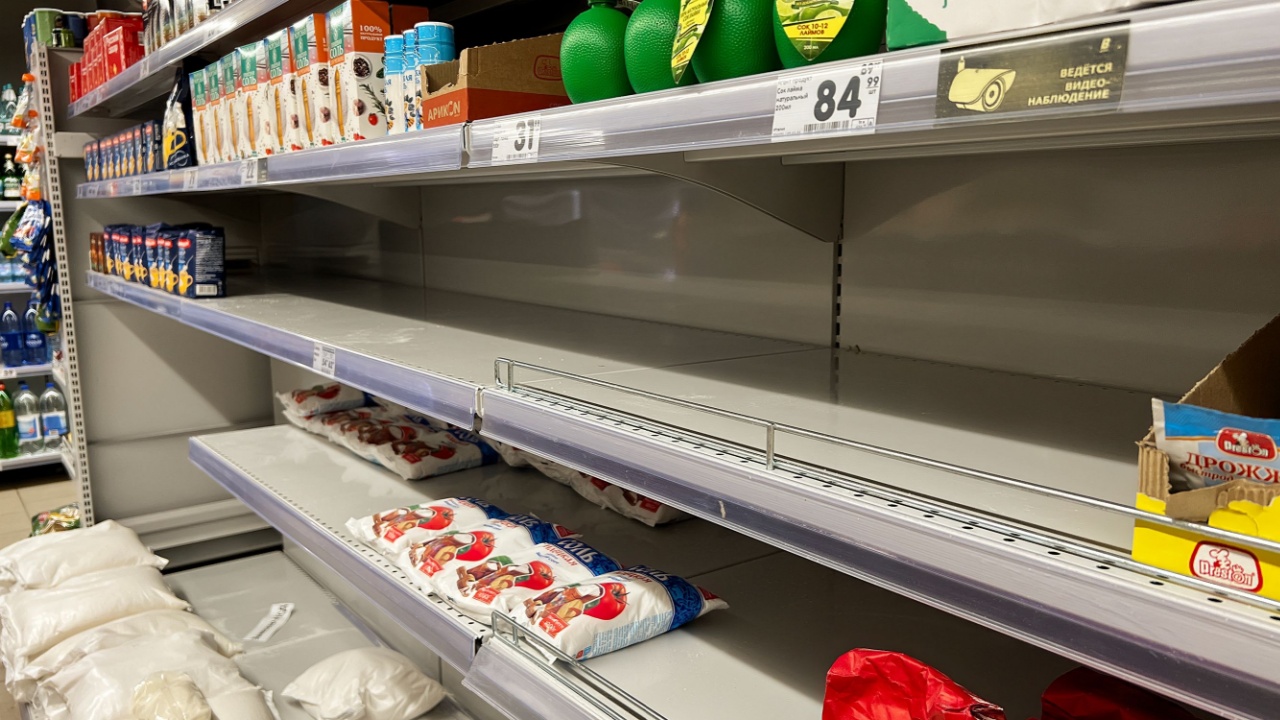World
Ukraine Strikes Back: Economic Pressure Mounts on Russia

Ukraine’s strategic responses to the ongoing conflict with Russia are significantly impacting the latter’s economy. Following years of perceived resilience, Russia is now facing severe repercussions due to Ukrainian drone strikes targeting key infrastructure and the tightening grip of international sanctions.
As the war drags into its fourth year, Russian media outlets are increasingly acknowledging fuel shortages, a stark deviation from their usual narrative of strength. Reports indicate that approximately 38 percent of Russia’s primary refining capacity has been affected, leading to long lines at gas stations across the country and even instances of rationing in occupied territories like Crimea. These developments mark a critical shift in the dynamics of the conflict; as Ukrainian forces enhance their capabilities, Russia’s economic vulnerabilities are becoming more pronounced.
Ukrainian drone strikes have been particularly effective, with the former defense minister, Andriy Zagorodnyuk, suggesting a strategy of “strategic neutralization.” This approach aims to cripple Russia’s operational capabilities across various domains. Ukrainian forces have focused on damaging airports, weapons depots, and energy infrastructure, which are crucial to sustaining the Kremlin’s military efforts.
This month, Ukraine introduced the R-360 Neptune missile, expanding its strike capabilities. The development of the low-cost FP-1 drone, which can reach targets up to 1,500 kilometers inside Russia, underscores Ukraine’s commitment to enhancing its military technology. According to reports, over 100 FP-1 drones are now produced daily, reflecting a significant ramp-up in Ukraine’s offensive capabilities.
The economic ramifications for Russia are severe. Gazprom Neft has drastically reduced its mid-year dividends from 246.4 billion rubles to 82 billion rubles, highlighting the financial strain on major corporations. By July, Russia’s budget deficit had reached $61.1 billion, far exceeding initial forecasts for the year. Analysts predict the deficit could rise to $70 billion in 2026, prompting the government to increase taxes, including raising the VAT from 20 percent to 22 percent.
International sanctions and the ongoing war are exacerbating these challenges. Russian oil output has begun to decline, with experts warning that most reserves could become costly or difficult to extract by 2030. The Wall Street Journal has indicated that these trends threaten the revenues crucial for financing Russia’s military operations.
Despite the economic turmoil, President Vladimir Putin remains committed to the war effort, seeing it as key to his political survival. He has made considerable investments in the military sector, often at the expense of the consumer economy, leading to deteriorating living standards for many Russians. As the conflict continues, the Russian economy is likely to face increasing pressures, with both high inflation and stagnant investment posing significant threats to stability.
According to economists Vladimir Milov and Igor Lipsits, the current economic crisis resembles the turmoil of the 1990s, with predictions of worsening conditions ahead. Milov describes a “deep budget crisis” from which recovery seems unlikely, while Lipsits warns that the regime’s inability to produce competitive goods will further exacerbate the economic downturn.
The ongoing conflict raises critical questions about Putin’s ability to sustain military operations amid growing economic difficulties. While the Kremlin may continue to rely on oil exports to fund its endeavors, experts suggest that the capacity for large-scale offensives may diminish.
As Ukraine escalates its military responses, the potential for a shift in the conflict’s trajectory increases. The resolution to Russia’s economic woes seems straightforward: an end to the war. Yet, as the situation stands, Putin’s commitment to the conflict may lead to further economic decline and social unrest within Russia. The choices facing the Russian leadership are stark: either pursue a path to recovery or risk a deeper collapse.
-

 Politics1 week ago
Politics1 week agoDallin H. Oaks Assumes Leadership of Latter-day Saints Church
-

 Sports1 week ago
Sports1 week agoSteve Kerr Supports Jonathan Kuminga After Ejection in Preseason Game
-

 Lifestyle1 week ago
Lifestyle1 week agoDua Lipa Celebrates Passing GCSE Spanish During World Tour
-

 Business1 week ago
Business1 week agoTyler Technologies Set to Reveal Q3 2025 Earnings on October 22
-

 Entertainment1 week ago
Entertainment1 week agoZoe Saldana Advocates for James Cameron’s Avatar Documentary
-

 Lifestyle1 week ago
Lifestyle1 week agoKelsea Ballerini Launches ‘Burn the Baggage’ Candle with Ranger Station
-

 Health1 week ago
Health1 week agoRichard Feldman Urges Ban on Menthol in Cigarettes and Vapes
-

 Health1 week ago
Health1 week agoCommunity Unites for Seventh Annual Mental Health Awareness Walk
-

 World1 week ago
World1 week agoD’Angelo, Iconic R&B Singer, Dies at 51 After Cancer Battle
-

 Science1 week ago
Science1 week agoChicago’s Viral ‘Rat Hole’ Likely Created by Squirrel, Study Reveals
-

 Business1 week ago
Business1 week agoMega Millions Jackpot Reaches $600 Million Ahead of Drawings
-

 Business1 week ago
Business1 week agoMLB Qualifying Offer Jumps to $22.02 Million for 2024









